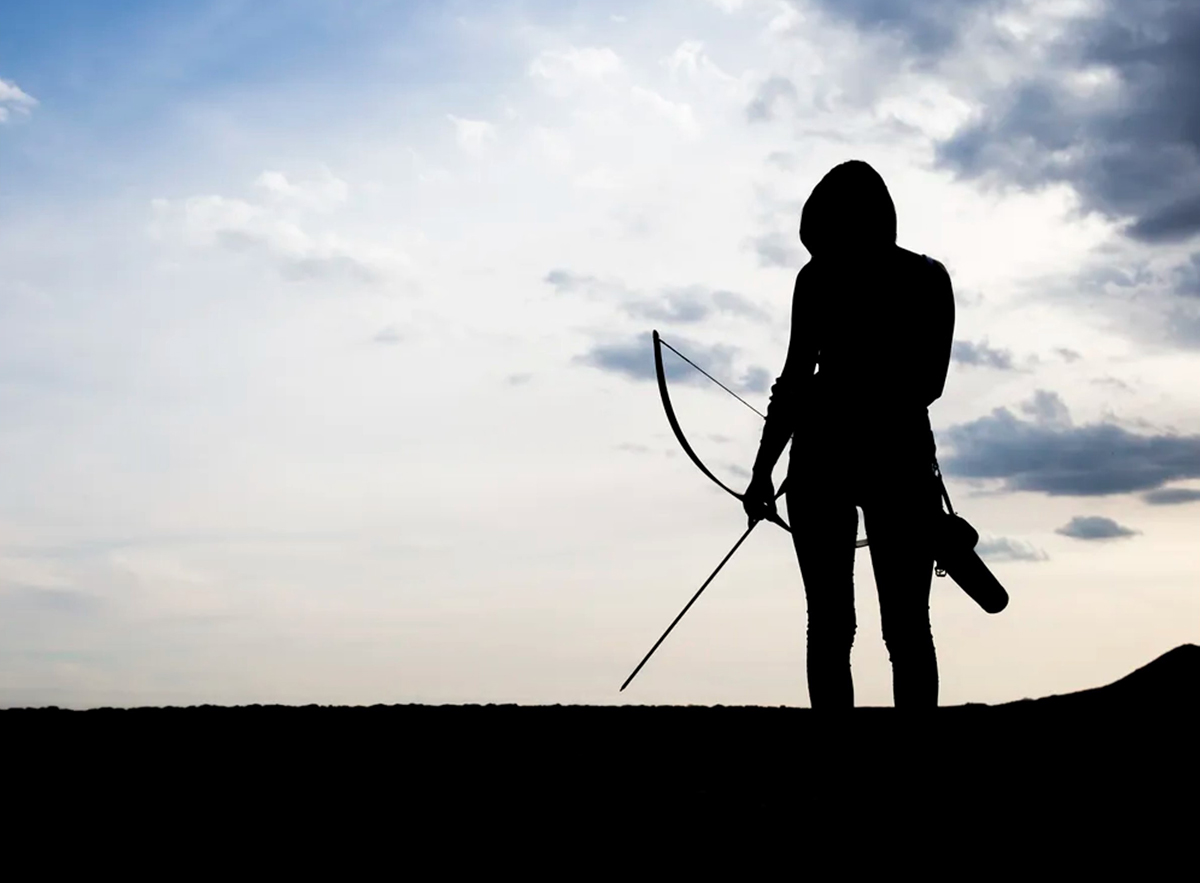


An article by Daily Correspondent Margaret Osborne on smithsonianmag.com - Early Women Were Hunters, Not Just Gatherers, Study Suggests - reports on the new study which reveals, regardless of maternal status, women hunted in almost 80 percent of recent and present-day foraging societies.

It has long been assumed that in prehistoric foraging societies, labor was divided by gender: women gathered and men hunted. Now a new study adds to the growing body of work challenging this idea, suggesting that prehistoric women were just as skilled at killing game as men were.
“We’ve had scattered reports here and there about women’s hunting,” Vivek Venkataraman, an evolutionary anthropologist at the University of Calgary in Canada who was not involved with the research, tells Science’s Bridget Alex. But the new research “pulls a lot of these things together.”
In the paper, published Wednesday in the journal PLOS ONE, a team of international researchers identified 391 foraging societies across the world (as a window into past human behavior), from the 1800s to present day. Of these, they obtained data on hunting from 63 societies.
“We were reading papers written by people who had lived with these groups and had studied their behavior,” study co-author Cara Wall-Scheffler, a professor and co-chair of biology at Seattle Pacific University, tells Live Science’s Jennifer Nalewicki. “They were looking at people and recording what they did.”
Their analysis revealed that regardless of maternal status, women hunted in 50 of these societies — or about 79 percent. And more than 70 percent of female hunting appeared to be intentional, rather than opportunistically killing animals while doing other activities. In societies where hunting was the most important activity for subsistence, women participated in hunting 100 percent of the time.
“The hunting was purposeful,” Wall-Scheffler tells NPR. “Women had their own tool kit. They had favorite weapons. Grandmas were the best hunters of the village.”
The researchers also found that women played an active role in teaching hunting, and they used a wider variety of weapons and hunting strategies than men did. For example, while men tended to hunt alone or in pairs, women hunted alone, with a man or with groups of women, children or dogs. Women hunted small game in 46 percent of the studied societies and took down medium or large game in 48 percent of them. In 4 percent of societies, they hunted game of all sizes.
While previous research has found that women may have rivaled males when it came to taking down big game, historically, scientists have dismissed females’ hunting prowess, possibly because of researcher bias. But recent studies have increasingly shown women as hunters: In the Americas, a 2020 study found that females likely represented up to 50 percent of prehistoric big game hunters, suggesting the practice was gender neutral.
And the remains of women, like men, have been discovered buried alongside hunting weapons. Yet, while researchers presume stone projectiles found buried with men are hunting tools, they are “less persuaded when projectiles are associated with females.”
Wall-Scheffler tells NPR that stories of gender differences in our ancestors have percolated into our society today, which can lead people to assume dividing labor based on gender is a more natural way to live. “It can be damaging,” Nurith Aizenman reports for NPR. “They use that to argue that gender roles should be more rigid today.”
by Bradshaw Foundation
Friday 14 July 2023
by Bradshaw Foundation
Monday 22 November 2021
by Bradshaw Foundation
Tuesday 12 July 2016
by Bradshaw Foundation
Thursday 23 June 2016
by Bradshaw Foundation
Tuesday 07 June 2016
by Bradshaw Foundation
Tuesday 29 March 2016
by Bradshaw Foundation
Wednesday 15 April 2015
by Bradshaw Foundation
Friday 27 March 2015
by Bradshaw Foundation
Wednesday 04 March 2015
by Bradshaw Foundation
Thursday 05 February 2015
by Bradshaw Foundation
Wednesday 04 February 2015
by Bradshaw Foundation
Thursday 26 June 2014
by Bradshaw Foundation
Friday 31 January 2014
by Bradshaw Foundation
Monday 20 January 2014
by Bradshaw Foundation
Friday 19 June 2009
by Bradshaw Foundation
Thursday 09 October 2008
by Bradshaw Foundation
Friday 14 July 2023
by Bradshaw Foundation
Monday 22 November 2021
by Bradshaw Foundation
Tuesday 12 July 2016
by Bradshaw Foundation
Thursday 23 June 2016
by Bradshaw Foundation
Tuesday 07 June 2016
by Bradshaw Foundation
Tuesday 29 March 2016
by Bradshaw Foundation
Wednesday 15 April 2015
by Bradshaw Foundation
Friday 27 March 2015
by Bradshaw Foundation
Wednesday 04 March 2015
by Bradshaw Foundation
Thursday 05 February 2015
by Bradshaw Foundation
Wednesday 04 February 2015
by Bradshaw Foundation
Thursday 26 June 2014
by Bradshaw Foundation
Friday 31 January 2014
by Bradshaw Foundation
Monday 20 January 2014
by Bradshaw Foundation
Friday 19 June 2009
by Bradshaw Foundation
Thursday 09 October 2008
Friend of the Foundation











